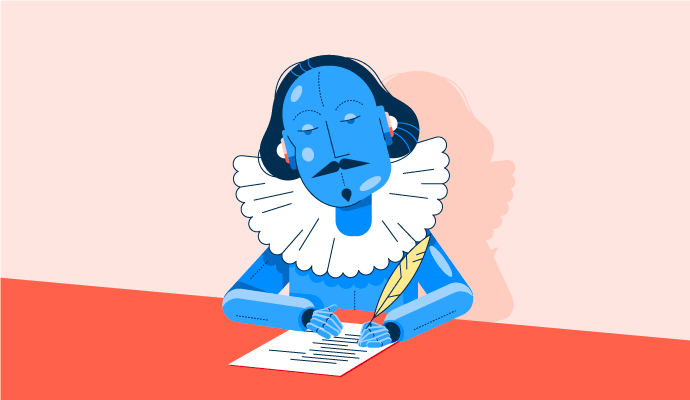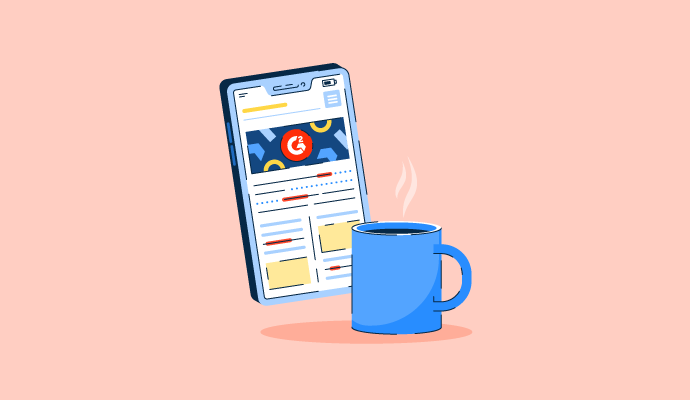August 10, 2024
 by Holly Landis / August 10, 2024
by Holly Landis / August 10, 2024

The use of artificial intelligence or AI-assisted writing tools like ChatGPT has been on the rise since early 2022, with users ranging from students to business professionals generating written content with a handful of prompts.
But is using AI cheating, and does ChatGPT plagiarize?
While there’s a fine line between originality and assisted content, many people are still trying to determine where that boundary is for ChatGPT.
Taking content straight out of a tool like ChatGPT may itself be seen as a form of plagiarism, and is something that plagiarism checker software looks for when crawling web content and comparing it against exact matches in its databases.
The short answer to ChatGPT plagiarism is no. ChatGPT doesn’t plagiarize in the sense that it copies and pastes written text produced by others and passes it off as its own.
However, having been trained on datasets of thousands, if not millions, of written words, there is a possibility that some of the text ChatGPT produces could be similar to something original that already exists. While the intention isn’t to directly copy this work, the possibility is there simply due to probabilities.
Particularly when AI writing assistants aren’t trained on broad datasets, the chances of plagiarism increase as answers are being pulled from a more limited number of sources.
While it’s unlikely that prompts will generate answers that are the same as another work verbatim, answers could contain the ideas of other writers without any credit or references for that idea being given. This is especially true when the algorithms used in these learning models are trained to work with specific linguistic patterns and sequences.
For businesses, this may not seem as important when talking about web copy or other marketing materials. But, in certain industries where content is regulated or in academia and the media where original arguments are essential, this type of plagiarism can be more problematic.
ChatGPT understands different queries using its natural language processing (NLP) tools and has been trained using large language models (LLMs) with millions of pieces of data to help it produce the answers to those queries.
The stages of how the tool was built and how it now works follow a similar pattern to other AI tools:
For a highly sophisticated tool like ChatGPT, the written material that it produces is plagiarism-free in the sense that it’s not directly lifting material from elsewhere and passing it off as its own original idea.
Paraphrasing and using ideas from other sources online is something that ChatGPT does. While it may look slightly different from being reworded or restructured, everything produced by ChatGPT has come from somewhere else — it’s in the very nature of how LLMs work. They’re trained by significant amounts of data pulled from various places, and the answers they give to prompts are reflective of this information.
It’s also important to know that even if you used the same prompt as someone sitting next to you, ChatGPT wouldn’t necessarily give both of you the exact same answer. This level of sophistication is what makes ChatGPT content so realistic compared to original human text, but it also shows how the tool doesn’t directly lift copy from somewhere else. It’s vital to remember, though, that you’ll need to edit the answers yourself to make them truly unique.
The answer to this question all depends on who you’re asking. If you consider the dictionary definition of plagiarism, you could feasibly argue that ChatGPT content isn’t. If you’re using the writing as it’s generated in the software, ChatGPT isn’t a person, so you’re technically not plagiarizing from someone since it’s just a computer.
However, in many fields, like academia and journalism, having original thoughts and arguments with well-researched material and references to back you up is essential for ethical integrity. This is where using ChatGPT could be considered plagiarism, as it’s really no different than getting someone else to write your article or essay for you.
Where content needs to be original to you as the writer, it’s possible that ChatGPT-generated material could be considered plagiarized because it hasn’t come directly from you (even if it’s not technically taken from another person).
Some organizations are trying to get around the blurry boundary of this question by stating that content was fully or in part created using an AI software. Some academics are even starting to cite ChatGPT as a source in their references.

Every Thursday, we spill hot takes, insider knowledge, and news recaps straight to your inbox. Subscribe here
There are numerous ways that AI-written content stands out compared to human-produced text. While these machines become more sophisticated every day, particularly as more people use them and increase their training, there are still a handful of ways to look out for ChatGPT-created content.
Despite the technology that’s gone into these machines, AI tools still aren’t perfect. Tone shifts, repeated phrases or sentence structures throughout the content, and any words or phrases that simply don’t make sense are a giveaway that there’s been some AI involved in at least part of the writing process. Jargon may also be more present in AI writing, where it attempts to fill knowledge gaps, particularly in very technical industries.
When reviewing written content that you’re concerned has been written by ChatGPT rather than a human, contextual clues are often one of the biggest indicators. If very specific references are made without further details and context added, or if the larger context feels like it’s missing the point entirely, it’s likely been written by AI.
Machines still lack the tools to understand the nuance of human arguments and conversations, which is why adding your own personal touch to your writing is what makes it truly unique and memorable.
No plagiarism checker is 100% accurate, but they are good at picking up on the signs that something is likely generated by AI rather than mostly human-led work. Both false positives and negatives can occur, so it’s best not to rely on these entirely and still use your own interpretation when reviewing content.
Some companies, like OpenAI, have also integrated a watermark in their code, which flags when text is copied and pasted straight from the tool into another platform.
* These are the five leading plagiarism checker tools from G2’s Fall 2024 Grid® Report.
While ChatGPT isn’t necessarily considered outright plagiarism, the debates continue as to where the line is drawn on the originality of this content. But that shouldn’t stop you from using these tools to help you with your writing!
Whether you need to get started with content ideas or you’re struggling with a blog post outline, ChatGPT can be a great resource to use. Just remember to put your own stamp on your work to make it feel authentic to you and your business.
Find out more about AI writing assistants and how they can help you in the writing process, from research to correcting grammar and more.
Holly Landis is a freelance writer for G2. She also specializes in being a digital marketing consultant, focusing in on-page SEO, copy, and content writing. She works with SMEs and creative businesses that want to be more intentional with their digital strategies and grow organically on channels they own. As a Brit now living in the USA, you'll usually find her drinking copious amounts of tea in her cherished Anne Boleyn mug while watching endless reruns of Parks and Rec.
Every writer aims to craft content that's uniquely theirs. But with the internet overflowing...
 by Harshita Tewari
by Harshita Tewari
Generative AI, synthetic media, and large language models (LLMs) are trending in the business...
.png) by Behrang Asadi
by Behrang Asadi
Generative AI is an artificial intelligence (AI) technique that uses deep learning and natural...
.png) by Shreya Mattoo
by Shreya Mattoo
Every writer aims to craft content that's uniquely theirs. But with the internet overflowing...
 by Harshita Tewari
by Harshita Tewari
Generative AI, synthetic media, and large language models (LLMs) are trending in the business...
.png) by Behrang Asadi
by Behrang Asadi


